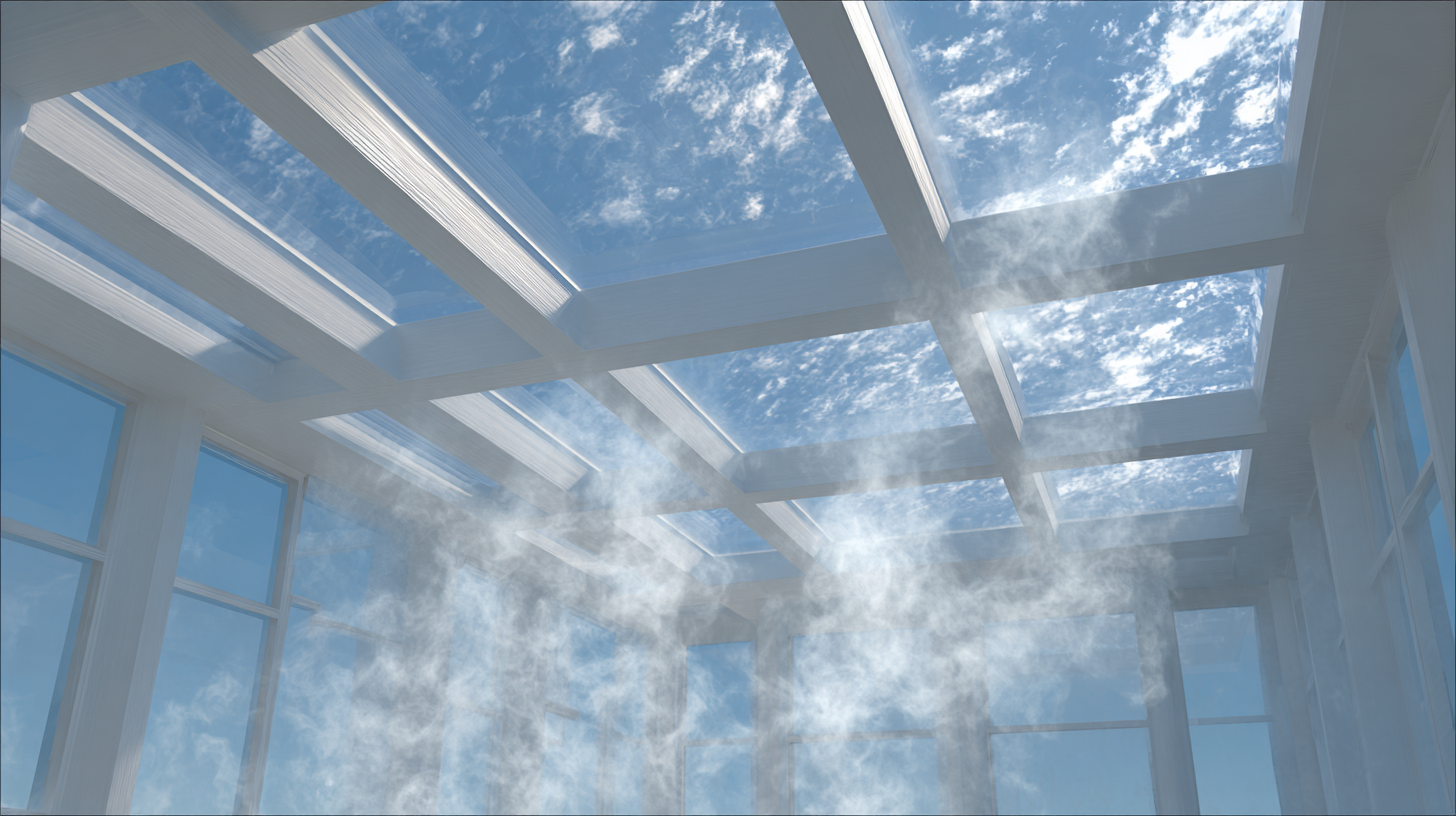
- Ginazhao@wanglumaterial.com
- Mon - Sat at 7:00AM to 9:00PM



In an era where energy efficiency and innovative heating solutions are paramount, carbon crystal panels have emerged as a groundbreaking technology in the heating industry. Renowned expert Dr. Emily Hartman, a leading researcher in energy-efficient materials, emphasizes the potential of this technology by stating, "Carbon crystal panels not only provide efficient heating but also represent a sustainable step toward reducing our carbon footprint." This inspiring perspective underscores the transformative role that carbon crystal panels can play in modern heating applications, making them a critical focal point for both consumers and industry professionals alike.

The science behind carbon crystal panels lies in their unique ability to convert electrical energy into heat through the alignment of carbon crystals. Unlike traditional heating methods, these panels offer rapid warmth and uniform temperature distribution, enhancing comfort and reducing energy consumption. As the demand for more sustainable heating solutions continues to rise, understanding the mechanics and advantages of carbon crystal panels becomes essential for anyone looking to unlock the future of heating technology.
By delving into the functionality and benefits of carbon crystal panels, we aim to provide readers with actionable insights, practical tips, and a comprehensive overview of this cutting-edge heating solution. Whether you're a homeowner seeking energy-efficient options or a professional in the industry, the potential of carbon crystal panels is both exciting and transformative.
Carbon crystal technology represents a groundbreaking advancement in heating solutions. Unlike traditional heating systems that utilize combustion or resistant wire methods, carbon crystal panels offer a more energy-efficient and environmentally friendly alternative. These panels harness the unique properties of carbon crystals, distributing heat evenly across surfaces and providing a warm, comfortable environment while consuming less energy.
When considering carbon crystal heating systems, it’s essential to understand the installation and maintenance aspects. One useful tip is to ensure panels are placed in locations where heat loss is minimized, such as against insulated walls. Additionally, monitoring the panels for dust accumulation can enhance their efficiency. Regular cleaning will help maintain optimal performance and prolong the lifespan of the heating system.
Furthermore, integrating smart technology with carbon crystal heating can maximize energy savings. Automating temperature settings based on your daily schedule allows for greater control over energy consumption. Installing programmable thermostats or using smart home systems can contribute to a more sustainable living environment while enjoying the benefits of advanced heating technology.
| Feature | Description | Advantages | Applications |
|---|---|---|---|
| Energy Efficiency | Carbon crystal panels utilize advanced technology to maximize heat output with minimal energy input. | Reduced energy costs, lower carbon footprint. | Residential, commercial, and industrial heating. |
| Durability | Constructed from robust materials, these panels offer long-lasting performance. | Lower maintenance costs, extended product lifespan. | Long-term installations in various environments. |
| Safety Features | Incorporates thermal sensors to prevent overheating. | Enhanced safety, peace of mind for users. | Homes, offices, schools, and hospitals. |
| Environmental Impact | Reduces reliance on fossil fuels and decreases greenhouse gas emissions. | Supports sustainability goals. | Green building projects and eco-friendly renovations. |
| Installation Flexibility | Can be mounted on walls or ceilings, allowing versatile placement. | Customizable heating solutions for various spaces. | Residential rooms, offices, and warehouses. |
Carbon crystal panels are at the forefront of innovative heating technologies, leveraging unique mechanisms of heat generation that are transforming the way we approach energy efficiency. At the core of their operation is the structure of carbon crystals, which allows for efficient heat conduction and distribution. Through controlled electrical current passage, these panels activate a process where electrons move within the carbon lattice, generating heat via resistive heating principles. The energy produced is not only efficient but also highly controllable, offering a versatile solution for both residential and industrial applications.
Recent studies indicate that the heat generation efficiency of carbon crystal panels can exceed traditional heating systems by a factor of three, according to a report from the Global Energy Efficiency Alliance. Furthermore, the potential integration of magnetic field-assisted electrocatalysis as explored in current research expands these mechanisms even further, presenting new avenues for enhancing heat generation through optimized interactions between catalysts and magnetic fields. This not only signifies a leap in operational efficacy but also paves the way for sustainable and eco-friendly heating solutions that align with the global push towards decreasing carbon footprints in energy consumption.
When it comes to heating solutions, carbon crystal panels are emerging as a revolutionary alternative to traditional methods like radiators and convection heating. Unlike conventional systems that rely on airflow and can lead to uneven temperatures, carbon crystal panels emit infrared radiation directly to warm objects in a room, creating a more even and comfortable environment. This direct heating method not only improves efficiency but can also lead to lower energy bills, as these panels consume less electricity to achieve the same level of warmth.
**Tips:** To enhance the effectiveness of carbon crystal panels, consider strategically placing them near colder walls or windows to combat drafts. Additionally, using programmable thermostats can optimize energy usage by only running the panels during peak times when you need warmth the most.
Moreover, the sleek design of carbon crystal panels allows for versatility in home decor. They can be mounted on walls or ceilings without taking up valuable floor space, making them ideal for smaller rooms. In contrast to bulky traditional heaters, these panels can integrate seamlessly into modern interiors while providing superior comfort and efficiency.

Carbon crystal heating systems represent a significant advancement in energy technology, combining innovative materials science with practical applications for sustainable heating solutions. The unique properties of carbon-based materials, including conductivity and thermal efficiency, make them ideal candidates for modern heating applications. For instance, carbon nanotubes and graphene have been explored for their elevated heat transfer capabilities, making them suitable for use in electrospun nanofiber systems designed for clean energy applications.
In addition to their heating applications, carbon-based materials offer versatility across various sectors, from energy storage to environmental remediation. Recent developments in graphene nanoplatelet-based ionanofluids highlight their role as effective heat transfer mediums in hybrid photovoltaic-thermal solar collectors, enhancing the overall efficacy of solar energy systems. As industries seek to reduce reliance on non-renewable resources, the incorporation of carbon crystal technology not only promises energy efficiency but also aligns with global sustainability goals, showcasing the multifaceted benefits of these advanced materials in contemporary heating systems.
The future of heating technology is set to be revolutionized by carbon crystal panels, which capitalize on the unique properties of carbon-based materials. With the increasing emphasis on sustainability, innovations in carbon capture and nanomaterial synthesis are creating promising avenues for the development of efficient heating solutions. Recent advancements have showcased the potential of carbon crystals synthesized from biobased resources, not only for effective heat generation but also for applications in environmental remediation, such as water treatment.
As researchers explore trends in carbon-based nanomaterials, the use of electrospun carbon nanofibers and quantum dots is gaining traction. These materials offer significant advantages, including high strength, lightweight characteristics, and excellent thermal properties. The integration of these innovations into heating systems could lead to enhanced efficiency and lower energy consumption. Moreover, emerging mechanisms for capturing carbon dioxide from the atmosphere reflect a broader commitment to reducing greenhouse gas emissions, further driving the importance of carbon-centric technologies in both heating and environmental applications.






